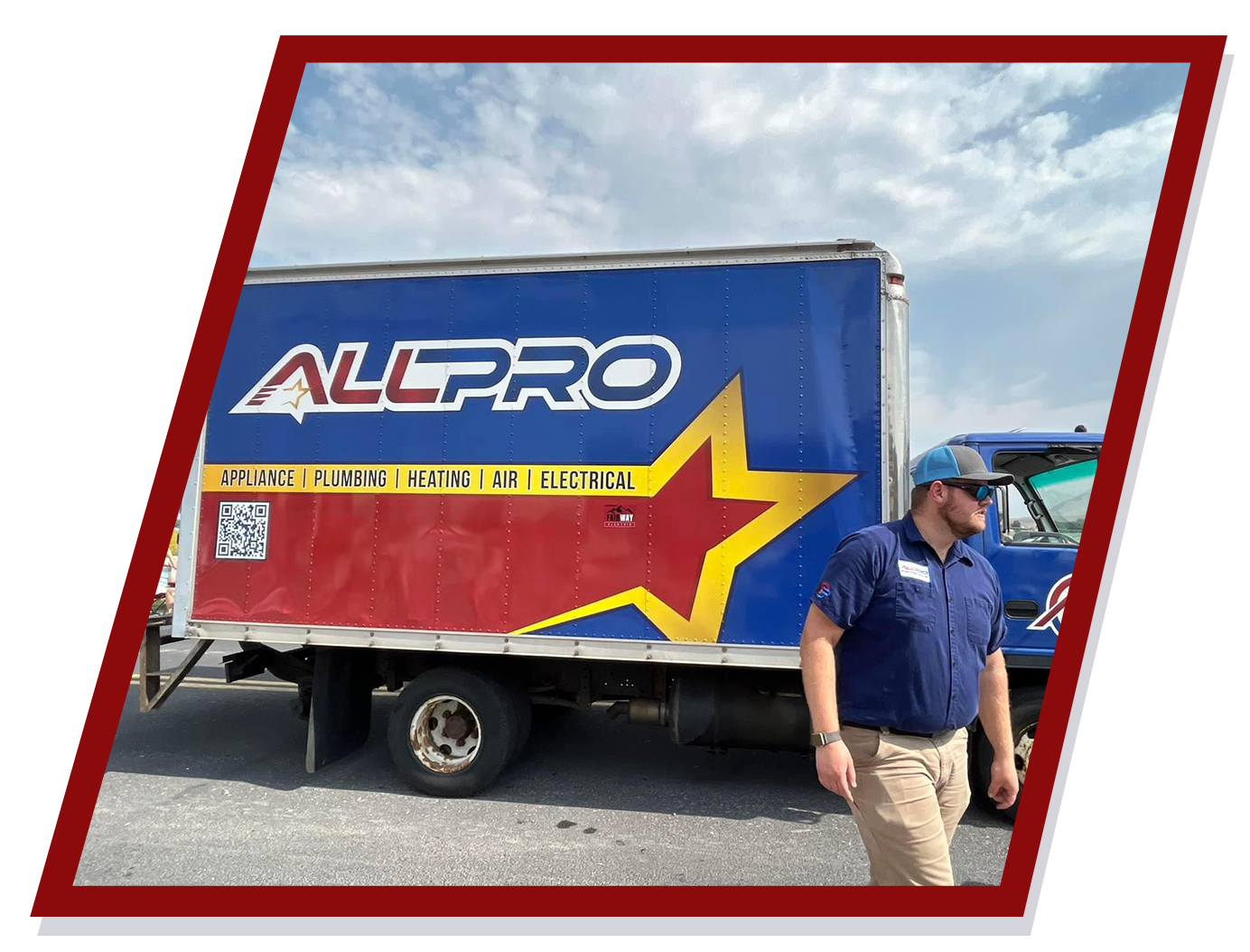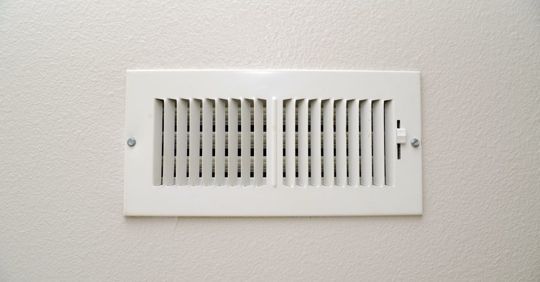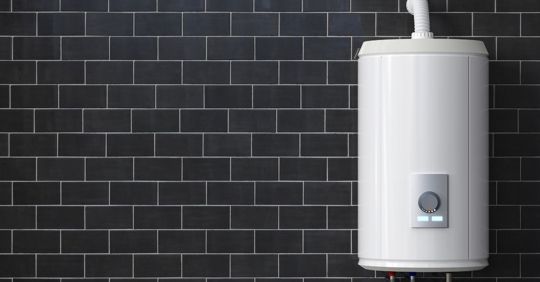Mini Split Installation in Salt Lake City
Comprehensive Installation, Repair & Routine Maintenance of Ductless Systems
Our experienced technicians have served the Greater Salt Lake Valley since 2008, providing reliable mini split installation in Salt Lake City, repair, & maintenance services for your ductless mini-splits. You can reach out to our office in Salt Lake City for an appointment, a free estimate, or 24/7 emergency services. We’ve received some great reviews from past customers and hope to earn your trust as well.
Call All Pro at
801-893-0551 today for ductless mini split installation in Salt lake City.
Ductless mini-split systems function using two main components: an outdoor compressor/condenser & an indoor air-handling unit. These two parts are connected by a conduit that houses the power cable, refrigerant tubing, suction tubing, & a condensate drain.
The outdoor unit compresses & circulates the refrigerant to the indoor unit through the conduit. Once the refrigerant reaches the indoor unit, it absorbs heat from the room & evaporates, cooling the air. This cooled air is then blown back into the room while the absorbed heat is expelled outside via the outdoor unit.
The installation of ductless mini-split systems involves mounting the indoor unit on a wall or ceiling inside the home & positioning the outdoor unit on a stable surface outside. A small hole is drilled through an exterior wall to run the conduit between the two units. During operation, the indoor unit uses sensors to monitor the room’s temperature & adjusts the airflow accordingly to maintain the desired climate.
Choosing the right location for the indoor and outdoor units is critical to ensure optimal performance and energy efficiency. Our skilled technicians assess factors such as potential sunlight exposure, proximity to electronic devices, and obstructions to airflow before installation. This comprehensive pre-installation evaluation helps prevent issues like insufficient cooling or excessive energy consumption, giving homeowners peace of mind and comfort.
The Benefits of Ductless Mini-Splits for Salt Lake City Homes
Energy Efficiency:
By eliminating the need for ductwork, they avoid the energy losses associated with forced-air systems. This often leads to lower utility bills & a reduced carbon footprint.
Flexibility & Zoning:
Each indoor unit can be set to a different temperature, catering to the specific comfort needs of each area.
Ease of Installation:
The process minimizes disruption to the home’s structure, making it workable for retrofitting older homes that lack existing ductwork.
Improved Indoor Air Quality:
Ductless mini-splits often come with advanced filtration systems that reduce dust, bacteria, pollen, & other airborne particles. Without ductwork, contaminants have less opportunity to accumulate & spread throughout your home.
Quiet Operation:
The indoor units are designed to operate at low noise levels, making them ideal for bedrooms, living rooms, & other areas where silence is appreciated.
Beyond these benefits, ductless mini-split systems also offer a level of personalization unmatched by traditional central air systems. Homeowners can tailor the climate in each room to the specific preferences of its occupants. This customization increases overall comfort and helps reduce energy costs by not over-conditioning unoccupied spaces.
Contact All Pro Today!
We will get back to you as soon as possible.
Please try again later.
All Pro's Blog


The Signs Your Ductless Mini-Split System in Salt Lake City Needs Repair
Decreased Performance:
If your ductless mini-split is not maintaining the desired temperature, it could indicate a problem with the refrigerant levels or a malfunctioning compressor.
Unusual Noises:
Given that ductless mini-splits are designed to operate quietly, any unusual noises such as grinding, squealing, or banging should be taken seriously. These sounds could point to loose components, worn-out parts, or debris in the system.
Bad Smells:
A musty odor could indicate mold growth within the unit or the ducts, while a burning smell might signal electrical issues.
Increased Energy Bills:
An otherwise unexplainable increase in your utility bills is a red flag. This could mean that your ductless mini-split is working harder than necessary due to inefficiencies or malfunctions.
Frequent Cycling:
If your ductless mini-split is frequently turning on & off, it may indicate an issue with the thermostat, compressor, or refrigerant levels. This short cycling can lead to uneven temperatures & increased wear on the system's components.
Preparing for Seasonal Changes with Your Ductless Mini-Split
Salt Lake City's weather can vary dramatically with the seasons, which makes it vital to prepare your ductless mini-split system for these changes. In the fall, cleaning the unit thoroughly and checking the filters ensures it's ready for winter heating, while proactive spring maintenance can help with efficient cooling in the summer months. Proper seasonal preparation not only extends the life of the system but also improves energy efficiency, saving you costs in the long run.
What Makes All Pro Different?
Trained, Professional Experts
Whether you have a plumbing problem, an HVAC hiccup, or an electrical emergency, we have a trained professional available to help!
Financing Available
We've partnered with Synchrony to offer financing so we can help you complete your project on time and within budget.
Exceptional Customer Service
We pride ourselves on our dedication to quality services and top-notch communication. We want you to be a customer for life!
Essential Tips for Ductless Mini-Split Maintenance
Regularly Clean the Filters:
Cleaning the filters of your ductless mini-split every few weeks can help deliver efficient airflow & prevent dust & debris buildup.
Inspect the Outdoor Unit:
Check for any obstructions or debris that may impede airflow. Clear away leaves, dirt, & any other objects around the unit to maintain optimal performance.
Monitor for Leaks:
Watch for any signs of refrigerant or water leaks. Leaks can significantly impact the system's performance & may lead to higher energy bills or property damage.
Keep Your Vents Unobstructed:
Ensure that your indoor unit’s vents are not blocked by furniture, curtains, or other objects. A clear area around the vent allows for adequate air circulation & efficient temperature control.
Check & Clean the Coils:
The evaporator & condenser coils can accumulate dirt & dust, reducing their efficiency. Periodically checking & gently cleaning these coils with a soft brush or cloth can help maintain optimal performance.
In addition to these maintenance tips, homeowners are encouraged to schedule annual professional assessments to ensure their systems are running smoothly. These check-ups allow professionals to perform deeper cleanings, check for wear and tear, recalibrate system components, and update software as needed. Keeping your mini-split system professionally maintained can extend its lifespan and enhance its efficiency significantly.
These are all good DIY steps that homeowners can & should take. Ideally, a good DIY routine will be augmented by a program of regular professional inspection. Having a ductless mini-split technician from our Salt Lake City office stop by allows us to identify & address potential issues before they become major problems.
Addressing Local Concerns with Reliable Mini-Split Service
Salt Lake Valley homes are as diverse as their owners, with older properties often lacking modern ductwork & newer ones prioritizing eco-friendly upgrades. Residents frequently face concerns such as:
- Energy Costs: that spike during summer heatwaves & winter cold snaps.
- Air Quality Issues: especially during inversions, where pollutants linger & can seep indoors.
- Noise Concerns: in quiet neighborhoods like Federal Heights, where a loud system could disrupt the peace.
A ductless mini-split system is an ideal solution for these common challenges. With advanced filtration, these systems can help reduce airborne pollutants, ensuring cleaner indoor air during inversion season. Their energy efficiency helps lower monthly bills, & the quiet operation ensures a serene home environment year-round.
Our team is acutely aware of Salt Lake City's unique climate demands and how they impact home heating and cooling needs. We are committed to providing solutions that not only meet but exceed your expectations, with a focus on personalized service and sustainable practices. Our dedication to the community ensures that you receive the best possible service tailored specifically to your home's requirements.
Call
801-893-0551 or contact us online today. Our bilingual team serves both English & Spanish-speaking homeowners.
Frequently Asked Questions
How Do I Choose the Right Size Mini-Split System for My Home?
The key to selecting the right size mini-split system lies in understanding your home's specific heating and cooling requirements. Factors like room size, insulation quality, and sunlight exposure play a crucial role. Over-sized or under-sized systems can lead to inefficiencies and increased costs. Our experienced team can perform a detailed analysis of your home to determine the best unit size, ensuring optimal performance and energy efficiency.
What Is the Lifespan of a Ductless Mini-Split System?
A well-maintained ductless mini-split system can last up to 20 years or more. Regular maintenance, such as cleaning filters and checking for refrigerant leaks, is crucial to extending the system's lifespan. Professional inspections help identify potential issues early, preventing costly repairs or replacements down the line.
Are Ductless Mini-Splits Suitable for Historic Homes?
Absolutely. One of the main benefits of ductless mini-splits is their non-invasive installation, which makes them an excellent choice for historic homes. They offer efficient heating and cooling without the need to install ductwork, preserving the integrity of the home's original design.
Can I Use a Ductless Mini-Split for Both Heating & Cooling?
Yes, ductless mini-split systems are designed for both heating and cooling, offering year-round comfort. They switch modes easily depending on the season, making them a versatile solution for homes in Salt Lake City where both heating and cooling are necessary throughout the year.




